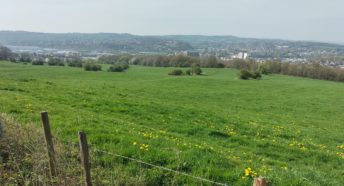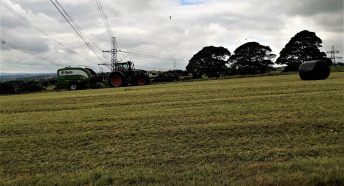Assessing Leeds Bradford Airport 2020 Development Proposals
The Airport recently applied to Leeds City Council in 2020 for permission to build a replacement terminal plus associated works – You can view the application plans on the Leeds City Council Public Access Planning Portal – Application Number 20/02559/FU.
Our full planning objection is available to download as a pdf. but here is our assessment of the plans.
There is an awful lot of reading to do to fully understand the current planning application proposals for Leeds Bradford Airport and how to respond to them. But the planning rationale for why it can and should be refused turns out to be deceptively simple.
It’s a relatively ambitious scheme in itself. The existing terminal building has been extended and modified in the past but, the applicant argues, an all-new building will be much more efficient and give passengers a much better experience. They also propose what is packaged as a marvellous suite of environmentally-friendly measures:
- The new building will be closer to the proposed new parkway rail station (on the Leeds-Harrogate line);
- It will be the first new terminal in the country to achieve the ‘BREEAM Excellent’ rating for its environmental performance;
- It will enable the airport’s ground operations of its own estate to be net zero carbon from 2023;
- There is also a net gain for biodiversity through landscape treatments and habitat enhancement.
Rather more equivocal is the car parking strategy. Bold claims are made of capping the total amount of car parking at the existing level (7,600 spaces) and achieving substantial shift to public transport; but there is reserve capacity for an additional 737 spaces ‘if proven necessary’ so an almost 10% increase could happen. And it turns out that the parkway station proposals are ‘at an early stage of preparation’ and might happen in five years – or might not.
Then we come to the really chewy part – the projected growth and how it might justify the need for the scheme. The Airport is relying on forecasts from a 2018 national study to suggest that it could grow from its 2019 base of 4 million passengers per year, up to a whopping 7 million in 2030. Naturally, this is supported by figures for how many jobs and how much economic growth this would enable – which in turn is interpreted as a demonstration of need for the scheme. The logic goes like this: ‘3 million more passengers would facilitate about 5,000 more jobs. We need the jobs, therefore we need the passengers, and therefore we need the new terminal’.
This logic fails in two ways. Firstly, there may be other, much more environmentally sound ways to create 5,000 jobs, so it’s not certain that the job creation is wholly beneficial. Secondly, passenger growth is under huge risk thanks to COVID-19, with a projected slump that will last for several years, to so it may not be such a safe bet for the City Region to back as a source of jobs.
At this point, the applicant invokes the notion of ‘planning balance’. This means that some planning considerations could weigh against it and others weigh in its favour and, on balance, the Council is asked to approve the scheme. In this case, the applicant argues that the passenger-jobs-economy growth demonstrates a need, and the environmental performance creates additional benefits, both of which should weigh heavily in the scheme’s favour. Meanwhile the elephant in the room – carbon emissions – are dealt with at national and international level and should not weigh against it. The applicant sees this as a compelling case.
To be fair to the Airport, there’s no reason to doubt their motives. To prosper and grow is their natural goal as a business, and by building efficient buildings, enhancing wildlife and attempting to secure a shift to public transport for surface access, they deserve marks for effort. On the other hand, most environmental campaigners believe that growth in aviation is wrong in principle, and see the rest as window dressing.
In the past year Leeds City Council has put huge effort into backing up its Climate Emergency declaration with some meaningful action, including scrapping a link road to the airport – so the stakes are high. Like most Councils, it needs to show about 14%-15% annual reductions in carbon emissions in order to reach its 2030 and 2050 targets. Could the Council grasp the nettle and refuse to support further growth of the airport on climate grounds? Well, it’s complicated. It says the future of aviation is a national and international issue, and Leeds can’t act unilaterally on it – which is fair enough. BUT Leeds could decide to downgrade the economic importance that it lends to the airport, and to promote other sectors instead.
Given these complexities, how come the answer is deceptively simple?
The Leeds Core Strategy (policy SP12) says that growth of the airport will be supported subject to major investment in public transport infrastructure. The airport suffers from poor public transport access compared to many other airports, notably Manchester, and the proposed parkway station seems several years away yet. Without genuine commitment from all relevant parties to make the station happen, the Council is not in a position to support the growth of the airport – to do so would conflict with this policy.
The biodiversity net gain, and the environmental performance of the buildings, are both simply complying with existing policies in the Leeds Core Strategy (policies G9 and EN2). Compliance is not a sweetener or enhancement – it’s just compliance, so it can’t be offered up to weigh in the scheme’s favour in the planning balance.
As a result, the only factors that could be argued to weigh in the scheme’s favour would be if the economic benefits were credible. Allowing a scheme due to potential economic benefits in the absence of firm commitments to the public transport solution would be a classic misalignment of cart and horse, and we would sincerely hope that a City Council that is aiming high on its climate response would not make that mistake. There are good planning grounds to refuse the application, and to do so would send a strong message that ‘airports equals growth equals good’ is no longer an assumption to made lightly.








